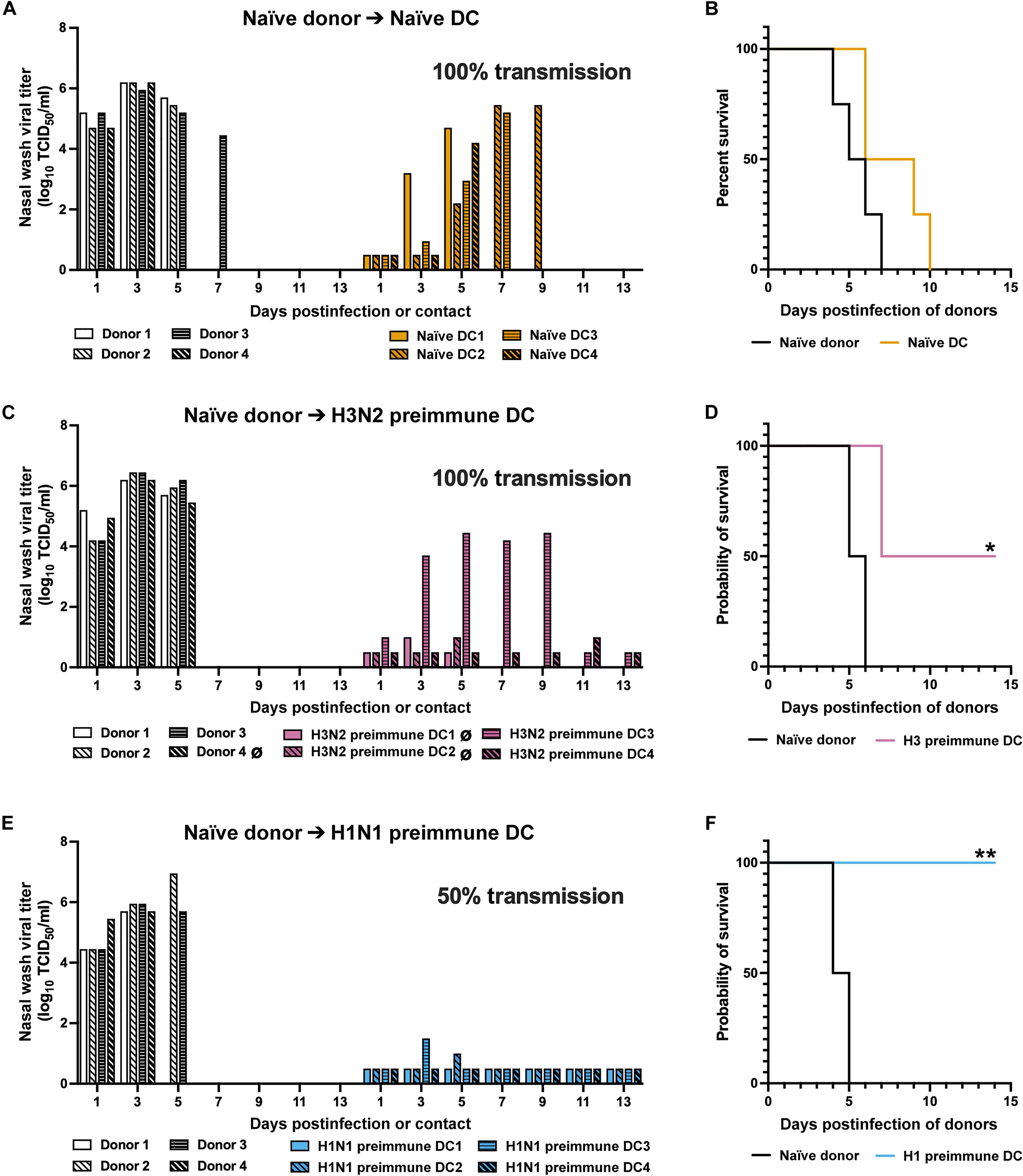先前存在的对2009年H1N1大流行性病毒的免疫力降低了雪貂对H5N1感染和疾病的易感性
IF 14.6
1区 医学
Q1 CELL BIOLOGY
引用次数: 0
摘要
新发流感病毒的人畜共患感染发生在全人群对季节性毒株免疫的背景下。由于高致病性进化枝2.3.4.4b型H5N1流感病毒在野生鸟类中在世界范围内传播,已在哺乳动物中发生了许多外溢事件。这包括最近对奶牛的溢出,引发了美国各地持续的疫情。人类感染禽流感和牛源型H5N1流感病毒已有记录,这引起人们对这些病毒可能引起大流行的关注。因此,使用雪貂模型,我们评估了先前存在的感染引起的免疫对H5N1感染易感性和疾病严重程度的影响。先前存在的对2009年H1N1流感大流行病毒的免疫预防了严重的H5N1疾病,并通过直接接触受感染的供体雪貂降低了对感染的易感性。这些研究表明,先前存在的对流感病毒,特别是2009年H1N1大流行病毒的免疫力,是对2.3.4.4b进化支H5N1病毒引起的感染和疾病的屏障。本文章由计算机程序翻译,如有差异,请以英文原文为准。

Preexisting immunity to the 2009 pandemic H1N1 virus reduces susceptibility to H5N1 infection and disease in ferrets
Zoonotic infections with emerging influenza viruses occur in the context of population-wide immunity to seasonal strains. Because of the worldwide spread of highly pathogenic clade 2.3.4.4b H5N1 influenza viruses in wild birds, there have been numerous spillover events into mammals. This includes a recent spillover into dairy cows that started an ongoing outbreak across the United States. Human infections with avian and bovine origin H5N1 influenza viruses have been documented, raising concern that these viruses may cause a pandemic. Therefore, using a ferret model, we evaluated the impact of preexisting, infection-elicited immunity on susceptibility to H5N1 infection and on severity of disease. Preexisting immunity to the 2009 pandemic H1N1 influenza virus prevented severe H5N1 disease and reduced susceptibility to infection through direct contact with an infected donor ferret. These studies demonstrate that preexisting immunity to influenza viruses, especially the 2009 pandemic H1N1 virus, is a barrier to infection and disease caused by clade 2.3.4.4b H5N1 viruses.
求助全文
通过发布文献求助,成功后即可免费获取论文全文。
去求助
来源期刊

Science Translational Medicine
CELL BIOLOGY-MEDICINE, RESEARCH & EXPERIMENTAL
CiteScore
26.70
自引率
1.20%
发文量
309
审稿时长
1.7 months
期刊介绍:
Science Translational Medicine is an online journal that focuses on publishing research at the intersection of science, engineering, and medicine. The goal of the journal is to promote human health by providing a platform for researchers from various disciplines to communicate their latest advancements in biomedical, translational, and clinical research.
The journal aims to address the slow translation of scientific knowledge into effective treatments and health measures. It publishes articles that fill the knowledge gaps between preclinical research and medical applications, with a focus on accelerating the translation of knowledge into new ways of preventing, diagnosing, and treating human diseases.
The scope of Science Translational Medicine includes various areas such as cardiovascular disease, immunology/vaccines, metabolism/diabetes/obesity, neuroscience/neurology/psychiatry, cancer, infectious diseases, policy, behavior, bioengineering, chemical genomics/drug discovery, imaging, applied physical sciences, medical nanotechnology, drug delivery, biomarkers, gene therapy/regenerative medicine, toxicology and pharmacokinetics, data mining, cell culture, animal and human studies, medical informatics, and other interdisciplinary approaches to medicine.
The target audience of the journal includes researchers and management in academia, government, and the biotechnology and pharmaceutical industries. It is also relevant to physician scientists, regulators, policy makers, investors, business developers, and funding agencies.
 求助内容:
求助内容: 应助结果提醒方式:
应助结果提醒方式:


